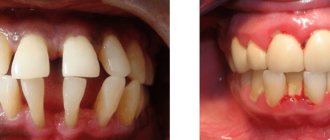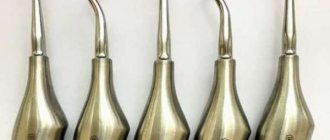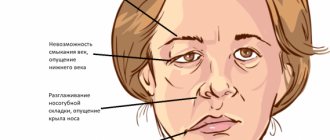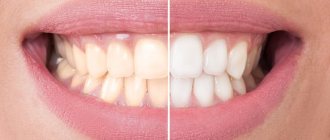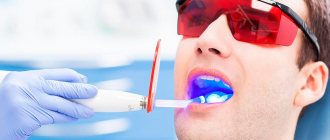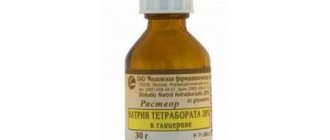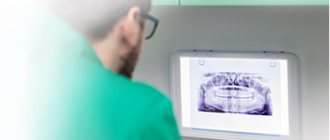From this article you will learn:
- Is it possible to cure caries without drilling with a drill,
- laser and ozone treatment in dentistry,
- the use of enzyme gels to remove caries.
Caries therapy in dentistry is a process that, before filling, requires the complete removal of hard tooth tissues affected by caries. Otherwise, caries will appear under the filling and will proceed unnoticed until pulpitis develops (inflammation of the nerve in the tooth). Removal of carious tissues is traditionally carried out using a drill and special abrasive burs, which seem to cut off the hard tissues of the tooth.
Drills make an unpleasant sound and make you wait for pain to occur, so alternative methods have been developed for patients with high anxiety that allow you to treat caries without a drill. In this case, a laser or a special enzyme gel can be used to remove carious tissue, and ozone can be used to disinfect tooth tissue. These methods make it possible to avoid unpleasant sound and vibration during treatment, and the use of a laser does not require local anesthesia.
Laser treatment of caries: photo
Devices for the treatment of caries without traditional drilling of the tooth with a drill appeared relatively long ago (about 15-20 years ago). However, most dental clinics still do not have these devices, and the demand for unusual treatment of caries without a drill has not become widespread. The reasons for this are quite simple: despite certain advantages, laser and ozone are still inferior to modern drills. And that's why…
Laser in dentistry
There are several types of dental laser: diode, argon, neodymium, erbium, carbon dioxide. The difference between the devices is in power, wavelength, point or constant flow of pulses. Each type of laser beam is used for specific procedures. It is used with equal success for therapeutic treatment and surgical intervention.
Delicate but effective
Over the centuries, the arsenal of dentists has only been improved, but fundamentally has not changed. The doctor acted mechanically and chemically. But with the arrival of lasers in the dental office, doctors received a fundamentally new tool - a light beam.
The power of its impulses is such that the cells and tissues affected by them instantly evaporate (since they consist mainly of water). They just disappear! By moving the beam, you can influence the tissue of any area. By changing the strength of the light beam, it is possible to process tissue to any desired depth. And do you understand the difference? It’s one thing to have a metal cutter rotating at great speed, and quite another to have a soft, imperceptible beam of light.
While fulfilling its main purpose, the laser also ideally sterilizes the surface on which it “works.” Therefore, the risk of subsequent infection is minimal.
In general, laser dentistry makes it possible to fulfill the dream of any patient: so that it “doesn’t hurt” and so that “everything goes away.”
True, some, impressed by Star Wars, are afraid of laser operations... Can a medical laser injure tissue? Tell me, can a scalpel or drill cause damage? The answer is obvious - they can. Any tool has the potential to cause injury. It matters who has it in their hands. In a clinic with a good reputation, the patient has nothing to fear.
Therapeutic laser dental treatment
In therapeutic dentistry, laser therapy is used in the following cases:
- Relieving inflammation.
When treating gingivitis, stomatitis or herpes, electromagnetic waves are directed to the source of infection and destroy pathogenic bacteria. - Sterilization.
Periodontal pockets and tooth canals are treated with a diode laser before installing a filling. - Treatment of caries.
Affected tissues are effectively removed using an erbium apparatus. - Filling.
Curing of light polymer fillings occurs under the influence of an argon laser. - Teeth whitening.
The laser beam activates the hydrogen peroxide-based whitening gel without heating the tooth tissue, that is, without the risk of overheating or burning the pulp. Thanks to the local pulse effect, the patient does not experience discomfort during the procedure.
Treatment of caries with ozone –
Non-contact treatment of caries with ozone consists in the fact that tissues affected by caries are not removed mechanically (or their removal is minimized), but are disinfected using ozone molecules. The latter is triatomic oxygen, which is capable of destroying 99.99% of all cariogenic microorganisms in the carious cavity. You can see what a device for treating caries with ozone looks like in the video below.
The course of the procedure for treating caries with ozone - first, a silicone cap specially provided by the manufacturer is applied to the tooth (Fig. 5-7), from under which air is pumped out and something close to a vacuum is created. Then ozone is supplied to the cap, which acts on the microflora, killing 99.9% of all pathogenic bacteria. Within 20-30 seconds, all cariogenic microorganisms die.
- The advantages of treating caries with ozone are that you can treat teeth without a drill (but only very small carious defects), in other cases you will still have to drill, which means you will have to do anesthesia. That's basically it.
- Disadvantages of dental treatment with ozone: in 99% of cases, teeth will still have to be drilled.
If you do not drill, a large amount of tissue may remain inside and outside the tooth, which is relatively softened and cannot bear the full load. Imagine that you are placing a permanent filling on demineralized soft dentin or enamel (and it is hard). As a result, when teeth are closed and when chewing hard food, the load placed on the filling will be transferred to the surrounding tissues (enamel and dentin), which are softened and cannot withstand such a load. There will be pressure, the filling will fall out... As a result, the tooth will have to be treated again.
Conclusions: the use of such devices is advisable only in pediatric practice, when it is not possible to use a drill. In this case, the softened dentin and enamel are first scraped out with curettage spoons, but before this, it is optimal to apply a special enzyme gel into the carious cavity, which dissolves the carious tissue. And only after this the remaining tooth tissue is disinfected with ozone and a filling is placed. How enzyme gels work – read below.
Application of laser in dental surgery
During surgery, a laser device is used for painless and bloodless tissue dissection—during the procedure, the beam instantly seals the vessels. The incision is smaller and thinner than with a scalpel, so no stitches are required during the operation, and after the wounds heal there are no scars or scars. In dental surgery, laser is used to solve the following problems:
- Removal of tumors.
The liquid inside the papilloma, cyst or fibroma is evaporated under the influence of electromagnetic waves. - Carrying out dental implantation.
Thanks to the laser, implant installation is delicate. Thanks to laser implantation, the soft tissue contour is better preserved. - Plastic surgery of the frenulum of the lips and tongue.
The fold is excised lengthwise or crosswise depending on the clinical case. - Gum correction.
Excess tissue is trimmed before prosthetics, filling or orthopedic treatment. The laser is also used for gum surgery after implantation or if there are other indications.
Strengthens, heals, removes
The new tool came into practice not so long ago. But it is already clear that laser dentistry centers effectively perform dozens of different procedures.
One of the most common diseases is periodontitis. This is an inflammation of the gum tissue surrounding the tooth. Bacteria enter here, under the cover of tartar they destroy soft and bone tissue, the tooth bleeds and becomes loose. The laser beam easily penetrates the “pocket” around the tooth, cuts off tissues affected by microbes, and sterilizes the entire surface of the pocket. This creates a sticky film. It tightly glues the gum to the tooth, and neither bacteria nor food debris can penetrate here.
Indications and contraindications
With the help of electromagnetic waves, it is possible to achieve positive therapeutic results even in the most difficult situations, and the absence of the need for anesthesia allows the device to be used for people with allergies to painkillers. The use of laser in dentistry is one of the safest and most effective methods of treatment, which is indicated for almost everyone. However, there is still a small list of contraindications.
- Nervous system disorders
- Late stage diabetes mellitus
- Kidney failure
- Oncological diseases
- Pregnancy (1 - 6 months)
- Open tuberculosis
- Elevated thyroid hormone levels
- Allergy to sun rays
Attention!
Insufficient qualifications of a specialist and failure to comply with safety rules significantly increase the risk to the patient’s health during laser treatment. Contact only trusted clinics, where your eyes are protected from radiation with special glasses, and the room is brightly lit during the procedure.
Treatment of a wedge-shaped tooth defect with the SANDMAN system is considered the ideal method of choice
After removing the carious process, the tooth cavity is disinfected with a laser. The dentist begins to restore the lost tissue with light material. With this technique, it is almost impossible to distinguish a filling on a tooth from its own tissues. What makes this technique the most aesthetic of its analogues.
The service life of light fillings with this method of processing hard tissues is more than 10 years.
Our clinic has been working using the SANDMAN air-abrasive teeth preparation method for more than 10 years. We are one of 3 Moscow clinics that have installed this equipment.
Over the years, a large clinical practice has been acquired, and more than 2,000 patients have been successfully treated using this method of dental treatment without drilling.
The technique is ideal for patients who want minimal intervention in the tooth tissue.
By contacting the Bionic Dentis clinic for dental treatment without drilling with the SANDMAN system, you are guaranteed high quality services and an individual approach to dental treatment.
Advantages of the method
Today, laser dental treatment in Moscow is widespread in dentistry. Despite the high cost, it is deservedly popular among patients who appreciate the advantages of laser treatment.
- Delicacy.
The absence of unpleasant noise and vibrations makes the operation easier. - Short duration of procedures.
Depending on the nature of the manipulations, the process takes from two to twenty minutes. - No need for anesthesia.
The device does not touch the tissues of the teeth and gums, but acts at a distance, so there is no pain from mechanical action. - Accuracy.
The rays are directed only at the affected tissues, healthy areas are not damaged. - Reduced injury rates.
The laser seals the vessels and edges of the wound, so even complex operations do not require stitches and bandages to stop bleeding. - Fast rehabilitation.
After treatment, the incision heals in a matter of hours and is not accompanied by swelling or pain.
Application of enzyme gel –
Instead of a drill, special enzyme gels can be used to remove caries, which dissolve only the tissues affected by caries, without touching the healthy hard tissues of the tooth. This is an excellent tool for use especially in children's practice. There are a large number of manufacturers of such products, and one of the options is BRIX 3000 enzyme gel, the principle of operation of which you can see in the videos below.
The enzyme gel is introduced into the carious cavity for about 2 minutes, after which the softened carious tissues are scraped out of the carious cavity using a special tool. After this, the cavity is washed out and filling of the tooth can begin. True, in some cases it may be necessary to use a drill to smooth out the edges of the tooth enamel hanging over the carious cavity.
Application of enzyme gel –
Treatment of cysts and granulomas with laser
Granuloma usually occurs as a result of poor treatment of caries and pulpitis. The disease is asymptomatic at the first stage, and is later accompanied by swelling of the gums, pain and darkening of the enamel. When treating dental granuloma with a laser, the affected area is drilled and an electromagnetic beam is sent into the hole, destroying the contents of the cyst and sealing the vessels. The doctor then installs a filling.
Without timely treatment, the granuloma develops into a cyst, which can provoke even more serious complications. Gentle treatment of dental cysts with a laser is considered a good method, as it allows you to save the tooth. The procedure takes place without pain, stress and stitches. In addition, treatment of a dental cyst with a laser without removal eliminates the risk of re-development of inflammation. The patient’s comfort and the absence of complications justify the additional costs, because the price when treating a dental cyst with a laser is higher than when using other methods.
Terrible drills are a thing of the past
The notorious drills, which with their sound could scare away all patients waiting for an appointment, and with the “elegance” of their work resembled a jackhammer, are a thing of the distant past. Today, dental clinics are equipped with modern, completely silent units that do not get on the nerves of patients with unpleasant buzzing and disgusting vibration. Even if the patient has to drill a tooth, today this can be done without noise or discomfort. Agree that the lion's share of hostility to dental treatment was formed precisely because of the fear of treating teeth with a disgustingly noisy “dental jackhammer.” Now that the likelihood of encountering an old-generation drill has been reduced to almost zero, you can go to the dentist with confidence and confidence.
Other equipment in dental clinics has also changed. Today, treating teeth has become much more pleasant and convenient than just 10 years ago. And technologies are constantly developing: new, comfortable, painless solutions appear. Today, prosthetics are not at all as uncomfortable and time-consuming as they used to be. It is quite possible to install a prosthesis without grinding the teeth, and implantation has reached such a high level that the degree of difficulty for the patient is similar to a regular tooth extraction.
But, of course, it’s better not to resort to prosthetics - if you pull yourself together from time to time and still visit the dentist for treatment, there is every chance of meeting old age with your own teeth.
Dentist at the 32 Dent clinic Mukhin Pavel Nikolaevich: “As paradoxical as it may sound, a person who is afraid of dental treatment needs to go to the dentist much more often than a “fearless” patient. Regular visits to the doctor will help to identify caries in time and cure it when neither drills nor dental pulp removal and canal cleaning are needed. Professional hygiene and annual medical examinations will help you maintain your dental health at a decent level and save yourself from serious dental treatment.”
How much does laser dental treatment cost?
As a rule, prices for laser dental treatment in Moscow depend on the type of dental disease and the severity of the pathology. You must be prepared for the fact that in any case it will be significantly higher than when using classical methods. Treatment of caries at the initial stage of the disease will cost from 800 rubles. The price for treating a dental cyst with a laser without removal will be approximately 1,500 to 2,000 rubles. For laser whitening you will have to pay from 8,000 to 11,000 rubles.
Obviously, the high cost of therapy is the only drawback of this technology. However, numerous rave reviews about laser dental treatment confirm the fact that patients are willing to pay for comfort, efficiency and peace of mind, the absence of irritating drill sounds and the frightening prospect of using anesthetics.
All the best for children
Laser therapy is successfully used in the fight against caries even in baby teeth, although only at the initial stage of the lesion. It is advisable for the child to be at least seven years old, but diligent and calm children can take advantage of the latest technology at a younger age.
For the treatment of small patients, the following rules apply:
- it is necessary to use only equipment with the ability to adjust the radiation power;
- During the procedures, a slight tingling sensation may occur, which the child should be warned about.
All other advantages of laser dentistry are common to children and adult patients.
Possibilities of laser dentistry
Dentistry using laser is universal. Today, professionals can treat not only caries, but also various gum diseases and combat many problems. Modern technologies allow for high-quality hygiene.
Is the tooth badly damaged? The laser will help cure it. Moreover, you do not have to visit the clinic 5-10 times. Usually 1-2 receptions are enough.
Are you correcting your bite? The laser will allow the doctor to take an ideal impression of the teeth and accurately select the necessary braces. Your child will be captivated by the process. He will not resist correcting the bite.
Do you want to save your child from gum disease and other problems? In this case, it is also worth using the services of laser dentistry.
Do you need oral surgery? And in this case, you can use modern technologies. They are suitable, for example, for trimming the frenulum of the tongue. Moreover, all operations are carried out in the shortest possible time and do not cause pain or discomfort. The interventions do not require long-term recovery and do not lead to severe bleeding or the occurrence or spread of infection.
What kind of filling is used for laser filling?
After removing caries, thoroughly cleaning and disinfecting the tooth area, a biocompatible (biologically suitable for the body) glass composite filling that matches the color of the tooth is inserted into it. Next, another laser is used to harden and bond this material to the tooth structure, after which the filling becomes part of it. In this way, the tooth is restored and regains its original beauty; normal chewing processes and biting will not damage or weaken it.
The biocompatible substance that bonds to the tooth will not weaken or discolor over time, nor will it crack or leak as is common with other fillings. This is because the “laser filling” is made of durable tooth-like materials and strong laser bonds that hold it in place. The tooth itself is not damaged or weakened as with traditional drilling and filling.
Don't forget that the laser filling substance and the way it is implanted into the tooth help preserve the natural structure of the tooth for biting and chewing.
Cleaning steps
Depending on the complexity of the procedure and the number of teeth affected, cleaning may take up to 60 minutes.
The entire process of laser cleaning of tooth enamel from stone takes place in several stages.
1. Treatment of teeth with an air-abrasive flow (Air flow method) to remove bacterial film and surface plaque.
2. Use of ultrasound (main effect on stones).
3. Grinding and polishing the enamel to create a smooth surface to reduce the risk of relapse.
4. Fluoridation of enamel with gels containing a large amount of fluoride, which protects and strengthens tooth enamel.
Tartars that have formed over a long period of time may require several visits to be completely removed. Also, in severe cases, specialists additionally use chemical compounds that dissolve tartar and tools to separate difficult areas from the tooth.
